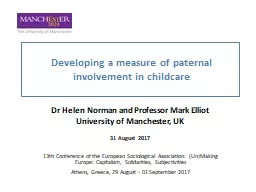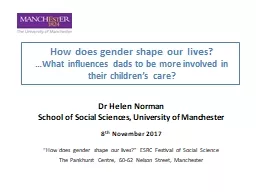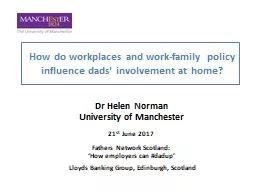PPT-Dr Helen Norman and Professor Mark Elliot
Author : susan | Published Date : 2022-06-07
University of Manchester UK 31 August 2017 13th Conference of the European Sociological Association UnMaking Europe Capitalism Solidarities Subjectivities Athens
Presentation Embed Code
Download Presentation
Download Presentation The PPT/PDF document "Dr Helen Norman and Professor Mark Ellio..." is the property of its rightful owner. Permission is granted to download and print the materials on this website for personal, non-commercial use only, and to display it on your personal computer provided you do not modify the materials and that you retain all copyright notices contained in the materials. By downloading content from our website, you accept the terms of this agreement.
Dr Helen Norman and Professor Mark Elliot: Transcript
Download Rules Of Document
"Dr Helen Norman and Professor Mark Elliot"The content belongs to its owner. You may download and print it for personal use, without modification, and keep all copyright notices. By downloading, you agree to these terms.
Related Documents














